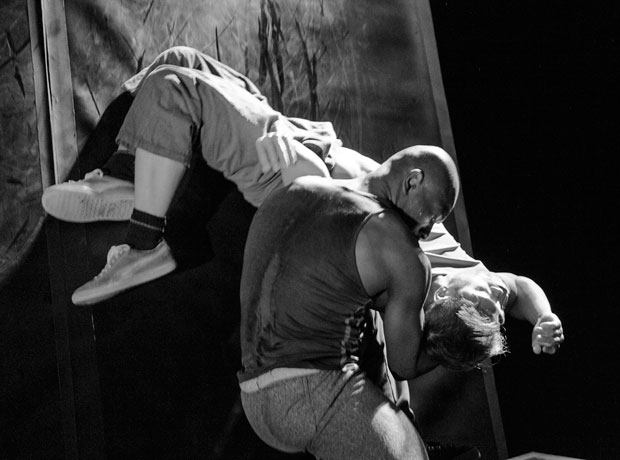
© Foteini Christofilopoulou. (Click image for larger version)
Russell Maliphant Company –
maliphantworks: Wall, One part II, Two, Afterlight (Part One)
★★★★★
London, Print Room at the Coronet
1 March 2017
Gallery of pictures by Foteini Christofilopoulou
www.russellmaliphant.com
www.the-print-room.org
When Anda Winters, artistic director of The Print Room in Notting Hill, took over the Coronet Cinema in 2014, she wanted to establish it as a west London venue for dance, as well as for drama, music and poetry. The late Victorian building (1898) was originally an ornate theatre before being converted into a cinema. Threatened with closure numerous times, it fell into picturesque disrepair. Thanks to the Winters family, friends and supporters, it is gradually being restored to its former glory without any regular public funding.
When I saw Hubert Essakow’s dance productions there, the auditorium was still semi-derelict, with rugs provided at the shabby seats to compensate for the lack of heating. Now it has warmth and shiny new seats, as well as an excellent lighting rig over the stage. The rest of the building remains delightfully eccentric – please don’t ‘modernise’ it – with a subterranean bar, lit by candles, on the raked floor of what used to be the stalls.
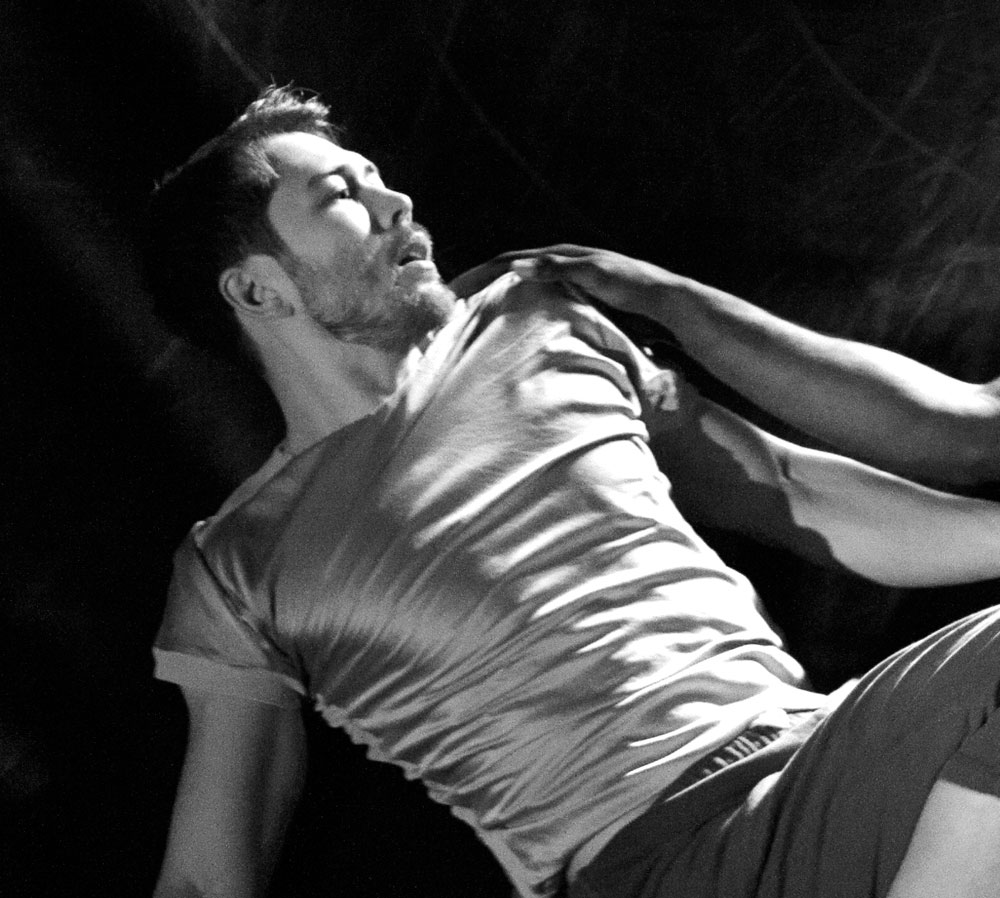
© Foteini Christofilopoulou. (Click image for larger version)
Russell Maliphant and his long-term collaborator, lighting designer Michael Hulls, proposed restaging early works in the unusual contexts of the building’s spaces. The evening becomes a sort of promenade performance, with spectators being led in two groups along the corridors between the bar, the small studio theatre (formerly a film projection room) and the circle of seats embracing the stage.
We start in the intimate studio, facing the wall from The Rodin Project (2012). Maliphant had based the work on Auguste Rodin’s The Gates of Hell, a construction the sculptor never finished. In the male duet, Wall, Dickson Mbi and Tommy Franzen tumble, climb and slide like the figures Rodin created, depicting the damned in Hell from Dante’s Divine Comedy.

© Foteini Christofilopoulou. (Click image for larger version)
The two dancers defy gravity, playing with our perceptions of which surfaces are vertical or horizontal. Both have exceptional upper body strength, scaling the wall like rock climbers, suspended weightlessly. They move rhythmically to Alexander Zekke’s score, sometimes as individuals, at other times as doubles of each other. The shapes they make are familiar from Rodin’s sculptures and his late maquettes, exhibited recently at the Courtauld Gallery: the acrobatic figurines could be turned upside down or floated in flight. When Franzen hangs from the top of the wall, supported on Mbi’s shoulders and then held in his arms, the sequence is as compassionate as a pièta. Far from seeming damned, these two are as heavenly as human beings can be.
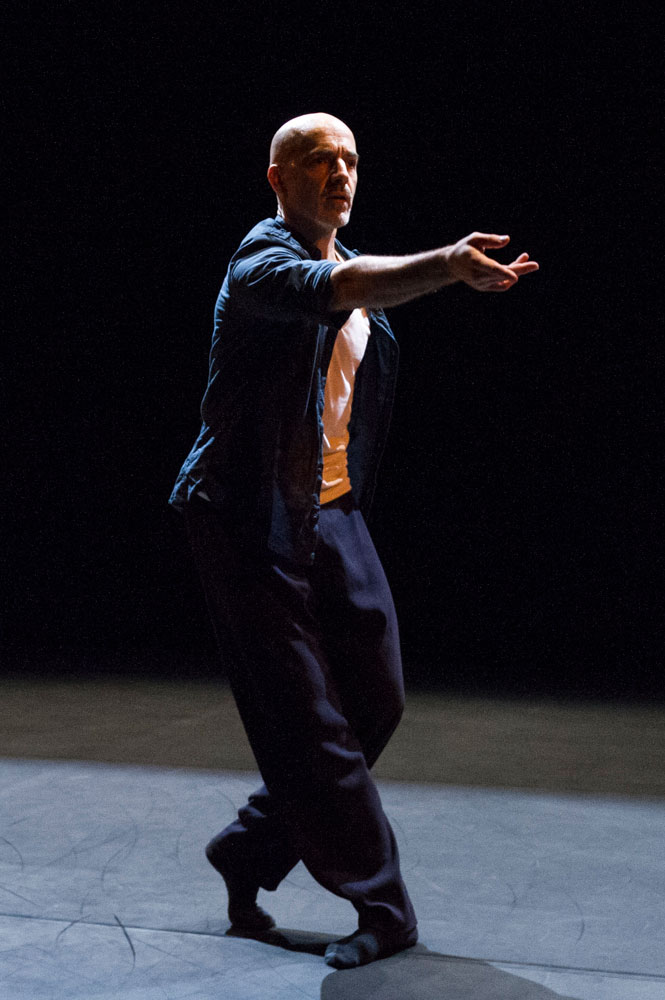
© Foteini Christofilopoulou. (Click image for larger version)
For the second part of the evening, Maliphant has brought back solos performed by their originators: himself, Dana Fouras (his wife) and Daniel Proietto. His original plan was to reprise a duet, Unspoken, that he had made with James De Maria 21 years ago. But injury took its toll on De Maria, and Maliphant (recovering from knee injury himself at 55) replaced the duet with his own solo, One Part II. He’d created One in 1998 for a Dance Umbrella performance and reworked it in 2002 for his own company’s repertoire. Any other dancer to have attempted the brief solo to Bach studies (played by Glenn Gould) cannot match Maliphant’s elegant fluency, after his years of training in different physical disciplines.
Undiminished by the passing of time, his solo is an exquisitely simple response to Gould’s playing (and humming). Hulls’s lighting picks out Maliphant’s head, shoulders and arms, at first momentarily, then sustainedly as he swivels, crouches and reaches upwards. Even when he sinks to his knees, he appears to be levitating, as free from atmospheric pressure as the notes of Gould’s piano. He disappears into the dark at the end like a phantom, a figment of light.
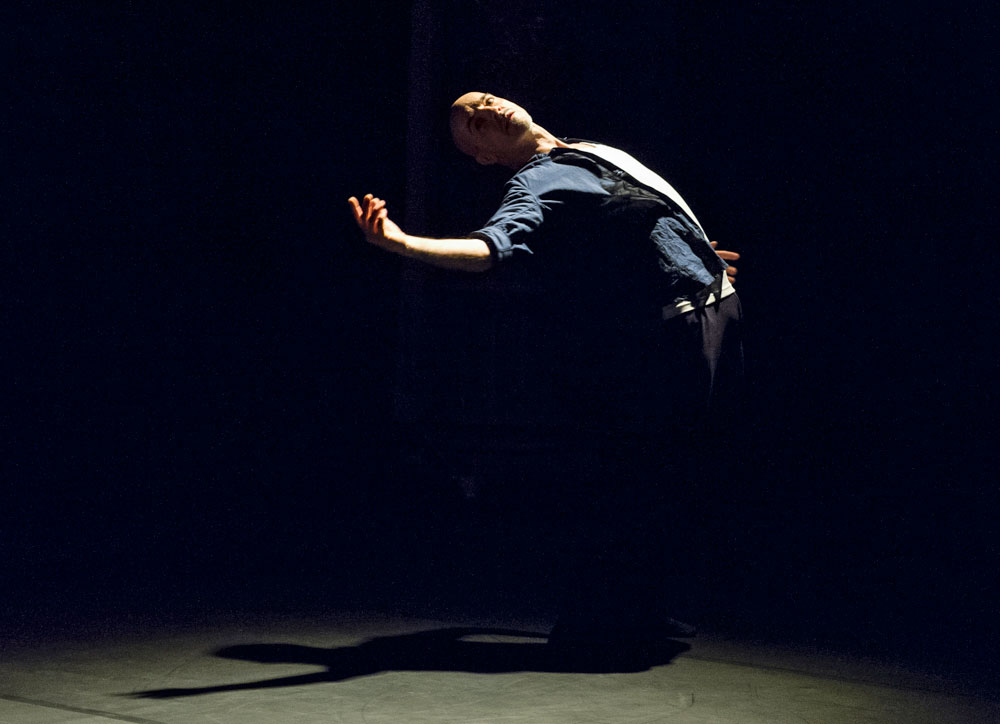
© Foteini Christofilopoulou. (Click image for larger version)
Two, to a soundscore by Andy Cowton, was originally made as a solo for Dana Fouras in 1997, then passed on to Sylvie Guillem for her performances. It has also been amplified for three female dancers, isolated in cubes of light. Fouras performs it 20 years on without any restriction in the sinuous articulation of her shoulders and spine, arms moving as limpidly as tentacles. The overhead light almost conceals the powerful motor of her legs and feet as her whole body undulates in spins. By the end, her hands cascade golden rays into the darkness around her.
Afterlight (Part One) was created in 2009 as a tribute to Nijinsky, with Daniel Proietto as the dancer’s delirious spirit. Nijinsky’s drawings featured obsessive circles, echoed by Proietto as he turns, head flung back to catch the light. Erik Satie’s pellucid Gnossiennes provide an eerily calm accompaniment to his perturbation. Halfway through, Proietto discards a red bomber jacket that obscures his supple torso, leaving the garment on the floor like a pool of blood. When he covers more ground in leaps and chainé turns, he seems to lose focus until the light closes in again, pulling us inside the dancer’s head as he fights for clarity.
The hour-long evening is a magical experience, a testament to the decades-long collaboration between Maliphant and Hulls, both exploring the possibilities of limiting time and space. It’s also extraordinary to see the same performers who inspired the original creations maintaining their special physical qualities, their powerful theatrical presences undimmed. The newly restored cupola of the Coronet theatre glows above them as they take their bows on a bare stage that needs no decorations.












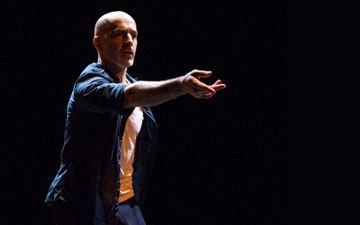

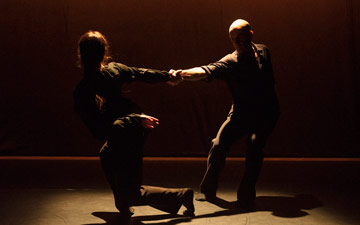
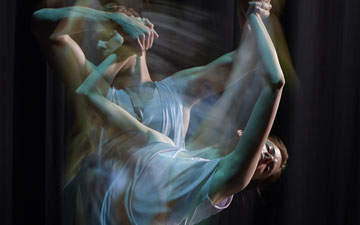
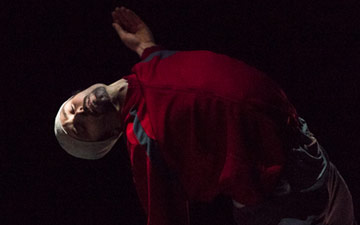
You must be logged in to post a comment.